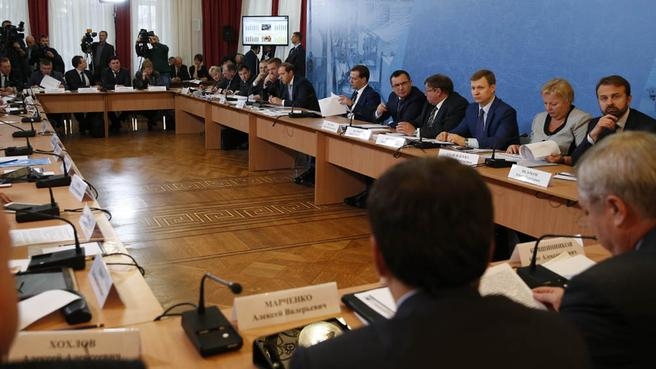Meeting on the textile industry
Excerpt from Dmitry Medvedev’s remarks during a meeting on the textile industry:
Clearly, the situation is complicated, especially so because this industry has been in marked decline for decades. The situation has improved in certain segments, remained unchanged in others, and further worsened in still others.
The number of workers in the sector is shrinking and now stands at 270,000, down from 400,000 seven to eight years ago. This is not entirely a bad thing, as it’s also a sign of modern labour practices in the industry.
There are objective causes, including obsolete manufacturing facilities, dependence on imports of raw materials and, of course, tough competition. Nevertheless, the industry still must be developed, and we can follow the example of a number of countries that managed to convert such factories into modern, efficient production facilities.
The industry has plenty of room to grow, and the demand for textile will always be there. At nearly three trillion roubles, the retail market for light industry is the largest among all non-food product markets. These can be profitable businesses that are good for the country's budget. However, the niche that Russian enterprises could claim has shrunk significantly in recent years, but remains quite large nonetheless. Therefore, taking into account the current economic situation and our import substitution policy, the Government will put together measures to stimulate the industry. Some of them are already being implemented, some will be incorporated into the revised Light Industry Development Strategy to 2020.
Dmitry Medvedev: "Taking into account the current economic situation and our import substitution policy, the Government will put together measures to stimulate the industry. Some of them are already being implemented, some will be incorporated into the revised Light Industry Development Strategy to 2020."
In a competitive environment, only those who respond quickly to market demands and come up with new products, survive. This is particularly important now that imports to Russia are declining. From January to July, they were down almost 6.5%, and this trend is likely to continue.
What additional resources can be used to meet these challenges? Of course, we must create our own resource base. Textile enterprises should look for long-term partners in Russia and abroad.
The industry is held back by lack of working capital and foreign investment (although there are some positive examples), and, of course, high interest rates on loans. Affordable loans remain a major challenge, and the federal budget is already providing subsidies to this end. They are used to reimburse a portion of costs involved in purchasing raw materials, to retrofit production facilities and implement new investment projects. About half a billion roubles in subsidies went toward light industry during the first six months of the year, which is almost twice as much as in 2013 (260 million roubles). This support must continue.
Dmitry Medvedev: "About half a billion roubles in subsidies went toward light industry during the first six months of the year, which is almost twice as much as in 2013 (260 million roubles). This support must continue."
It is important to boost the equipment replacement
rate in the industry. It’s imperative to build clusters in Russia’s textile
regions, including intersectoral clusters with upgraded production facilities and
higher productivity. Clearly, this will require a more flexible system of
production management, as well as well-trained managers and engineers.
<…>






